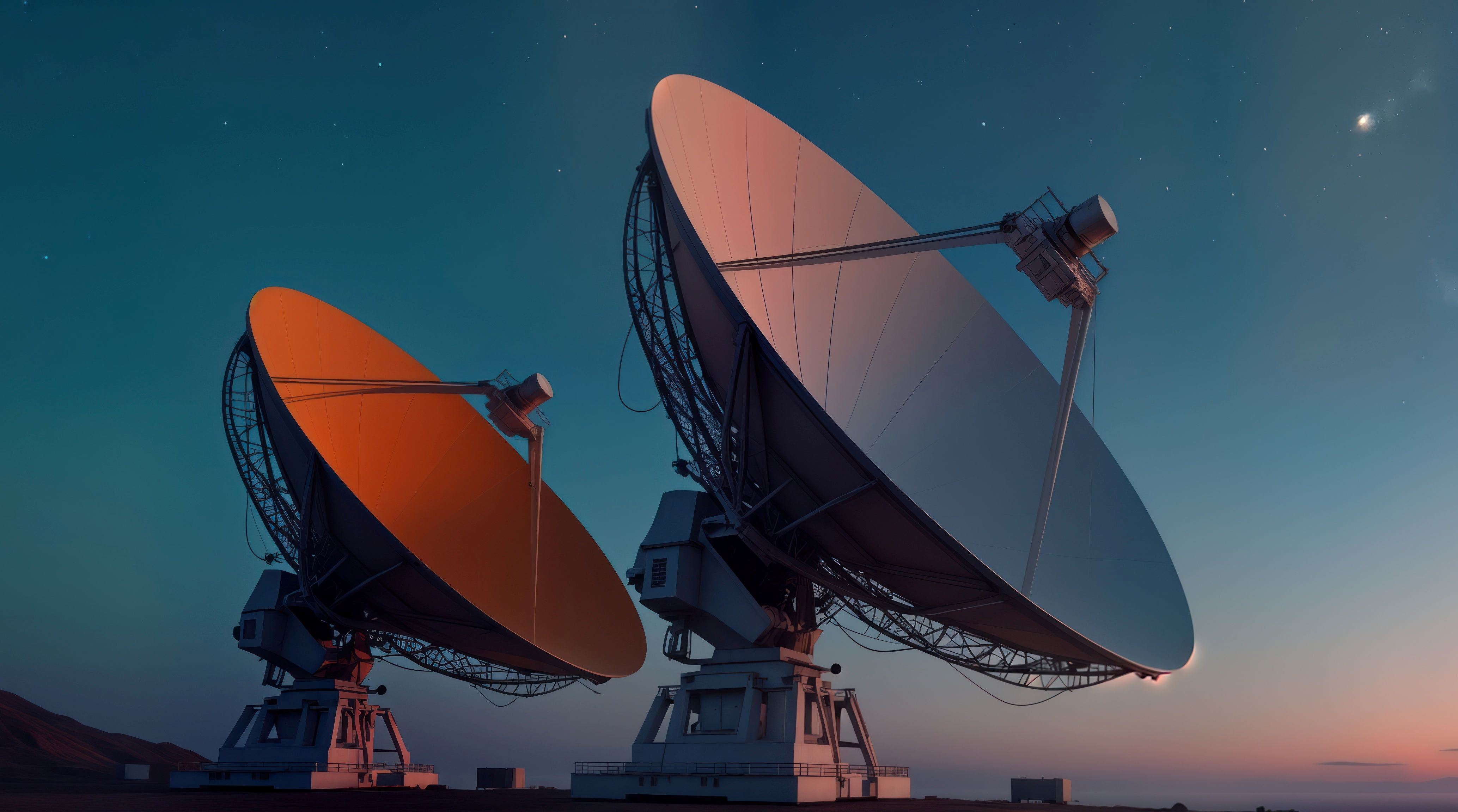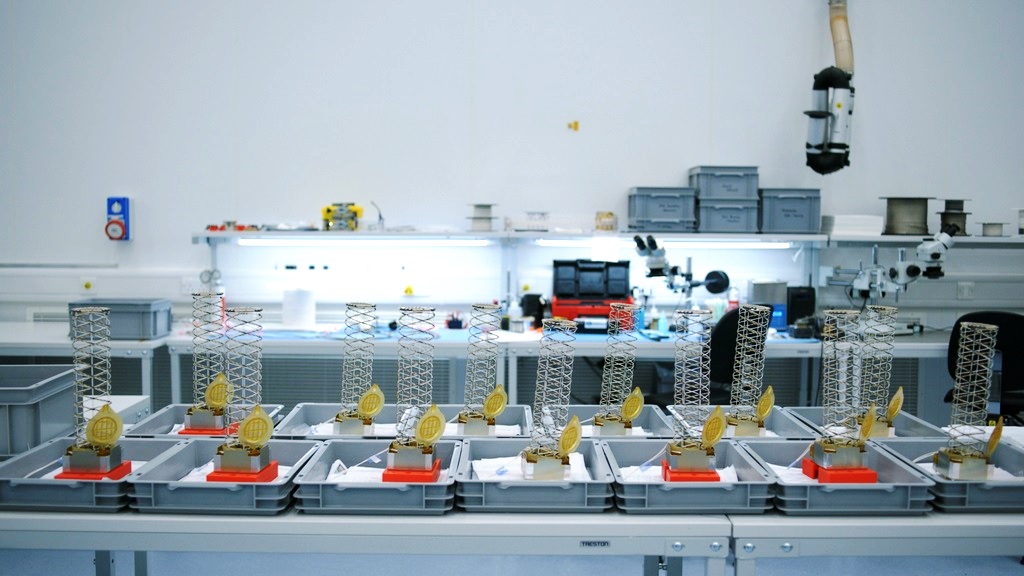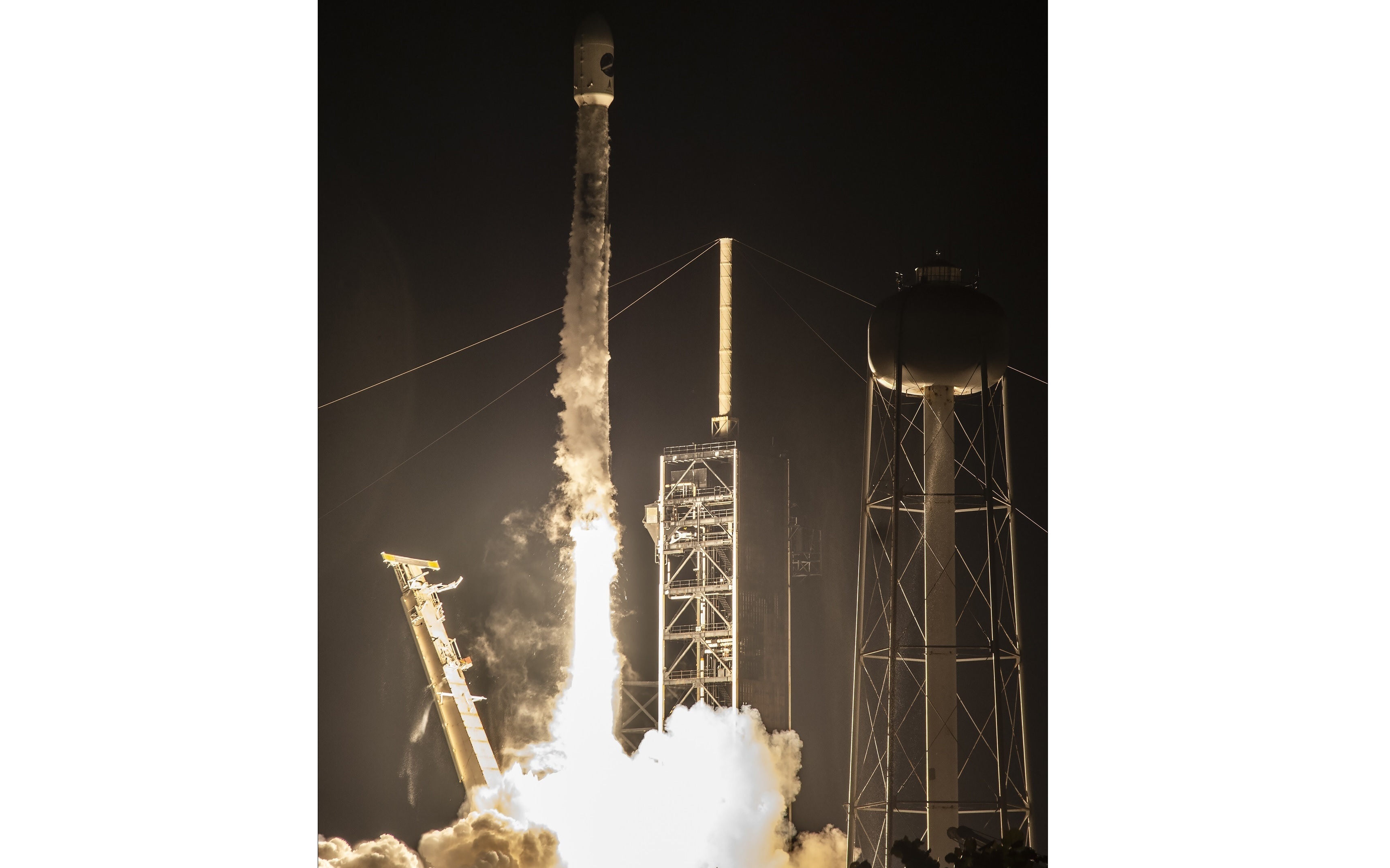Astrium's Swarm satellite fleet tested and mission ready

© Astrium
The Swarm trio of satellites have completed a series of environmental tests designed to demonstrate their fitness for space flight. The purpose of the Swarm mission is to analyse, in unprecedented detail, the geomagnetic field and its evolution over time. The results of the mission will help to improve our understanding of the Earth’s interior and climate. The trio of satellites is due to be launched from Russia’s Plesetsk Cosmodrome in July 2012.
Astrium – selected by the European Space Agency (ESA) as the prime contractor for the Swarm mission – is currently carrying out further extensive functional checks on the satellites at its supplier’s IABG test facility near Munich, in Germany. Preparations for the launch are scheduled to begin in May, when the three satellites will be shipped to Russia. All three satellites will be launched simultaneously from the Plesetsk Cosmodrome (around 800 kilometres northeast of Moscow) on a single Rockot launch vehicle.
Scientists hope that the three identical Swarm satellites will provide the most accurate survey to date of the geomagnetic field and record any changes that occur. Swarm will, in a manner of speaking, follow in the footsteps of Jules Verne’s novel ‘Journey to the Centre of the Earth’. Today, however, it is no longer necessary to dig tunnels or drill holes to take a closer look at the composition of the Earth’s interior. Thanks to the development of ‘satellite remote sensing’, Swarm can achieve this goal from orbit. The Earth’s gravitational and magnetic fields offer direct insights into the workings of its interior: from the variations these fields display at different times and places, scientists can draw conclusions about the dynamic processes taking place beneath the planet’s surface.
Extremely accurate, high-resolution readings of the geomagnetic field’s strength, orientation and fluctuations, complemented by precise navigation and velocity data, along with measurements of the electric field intensity, will provide the observational data required to distinguish between the various sources of the geomagnetic field and to explain them through models. Observation of these aspects from space offers a unique opportunity to take a closer look both at the composition of the interior of our planet and at the processes at work there. The mission will also enable scientists to analyse the Sun’s influence on the Earth. Furthermore, improvements in our knowledge of the geomagnetic field are expected to provide benefits of a practical nature, such as more accurate navigation for ships and aircraft, the discovery and access of natural resources below the Earth’s surface, a better understanding of the impact of the Sun on the Earth’s meteorological cycles, and timely warnings of dangerous radiation.
The satellites will be launched into a polar orbit at an altitude of 490 kilometres. After four years, two of the satellites will be steered into a lower orbit, circling the Earth in tandem at a height of 300 kilometres. The course of the third, higher-orbiting satellite will then be altered to cross the path of the two satellites in the lower orbit at an angle of 90 degrees.
Astrium began developing its first satellite for magnetic field research in deep space – the ISEE-B – back in the late 1970s. This work continued with the development of the four-satellite Cluster constellation which has been in orbit and operating since 2000. In the field of low Earth orbit satellites, the German Champ satellite, which collected data from 2000 to 2010, was built to an Astrium design. The Swarm constellation is now the logical next step down this path. In terms of technology, Swarm has benefited from the legacy of both the Champ satellite and the Cryosat satellite – another project led by Astrium with a mission goal of mapping the polar ice caps. When it comes to overall system design, individual subsystems and test ranges, Astrium’s satellite builders can draw on the wealth of experience they gained in these earlier projects.
The Swarm constellation forms part of ESA’s ‘Living Planet’ programme. Its mission is to study the Earth’s magnetic field. In its role as industrial prime contractor, Astrium is responsible for developing and building the Swarm satellites. Astrium is also actively involved in developing other satellites for ESA’s Earth Explorer missions. The company is the prime contractor for the EarthCARE Earth observation satellite which is currently under construction and for the ADM-Aeolus wind mission and its Aladin instrument. Furthermore, Astrium built the Cryosat-2 ice research satellite, which was launched on 8 April 2010. Astrium also supplied the platform for GOCE, which has been successfully ‘surfing’ and measuring the Earth’s gravitational field since 17 March 2009. Astrium also developed and built the Miras payload for the SMOS mission for the observation of soil moisture and salinity over the oceans, which was launched on 2 November 2009.













